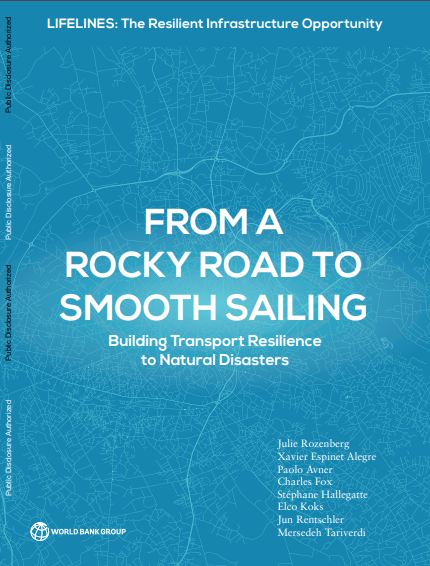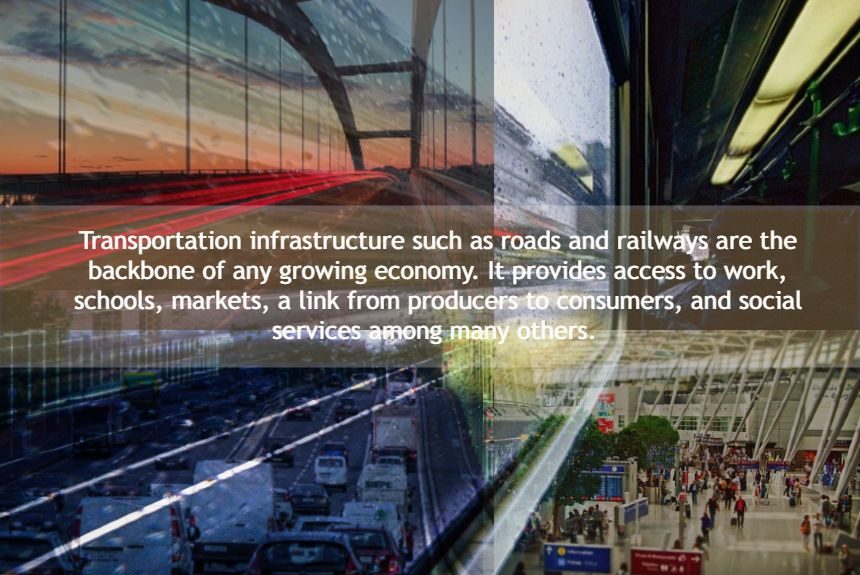The paper “From a Rocky Road to Smooth Sailing” summarises the risks encountered by transportation networks due to natural hazards and climate change and how these disruptions affect households and businesses directly and indirectly.
The paper gives background material for the “Lifelines, The Resilient Infrastructure Opportunity” report on infrastructure resilience and offers practical recommendations and solutions for building more resilience in transport infrastructures.
Because of their wide distribution, many transport assets are exposed to natural hazards like floods and earthquakes. By 2030, countries must spend between 0.5% and 3.3% of their GDP annually, or around US $157 billion to $1 trillion, on new transport infrastructure and an additional 1 to 2 per cent of GDP to maintain their network.
Transportation infrastructure, such as roads and railways, is the backbone of any growing economy. It provides access to work, schools, markets, a link from producers to consumers, and social services, among many others. Thus, building resilience against natural disasters or extreme weather conditions is crucial to prevent setbacks or disruptions.
Building resilient transport is creating reliable infrastructure, which is in line with the United Nations Development Goal 9 (SGD9) to “build resilient infrastructure, promote inclusive and sustainable industrialization and foster innovation.” This is especially true in least-developed countries, where they need to improve and increase their contributions to manufacturing and investments in research (UN Sustainable Development, 2019).
The paper includes two main sections. First, it discusses how natural disasters are expensive for transport networks and their users. This section presents global estimates of multiple hazards and risks to road and rail infrastructures and their indirect costs to businesses and households.
Second, the paper discusses solutions for increasing transport network resilience through spatial target strengthening, good maintenance, priority investing, and working with nature.
It discusses how transport infrastructure resilience can positively impact users, food security, and supply chains.
Read the entire paper by clicking on the image below:

Sources:
“Rozenberg, Julie; Espinet Alegre, Xavier; Avner, Paolo; Fox, Charles; Hallegatte, Stephane; Koks, Elco; Rentschler, Jun; Tariverdi, Mersedeh. 2019. From A Rocky Road to Smooth Sailing : Building Transport Resilience to Natural Disasters. Background paper for Lifelines;. World Bank, Washington, DC. © World Bank. https://openknowledge.worldbank.org/handle/10986/31913 License: CC BY 3.0 IGO.”
Sustainable Development Goal 9 (2019). United Nations Sustainable Development Goals Knowledge Platform. Retrieved from https://sustainabledevelopment.un.org/sdg9



Leave a Reply